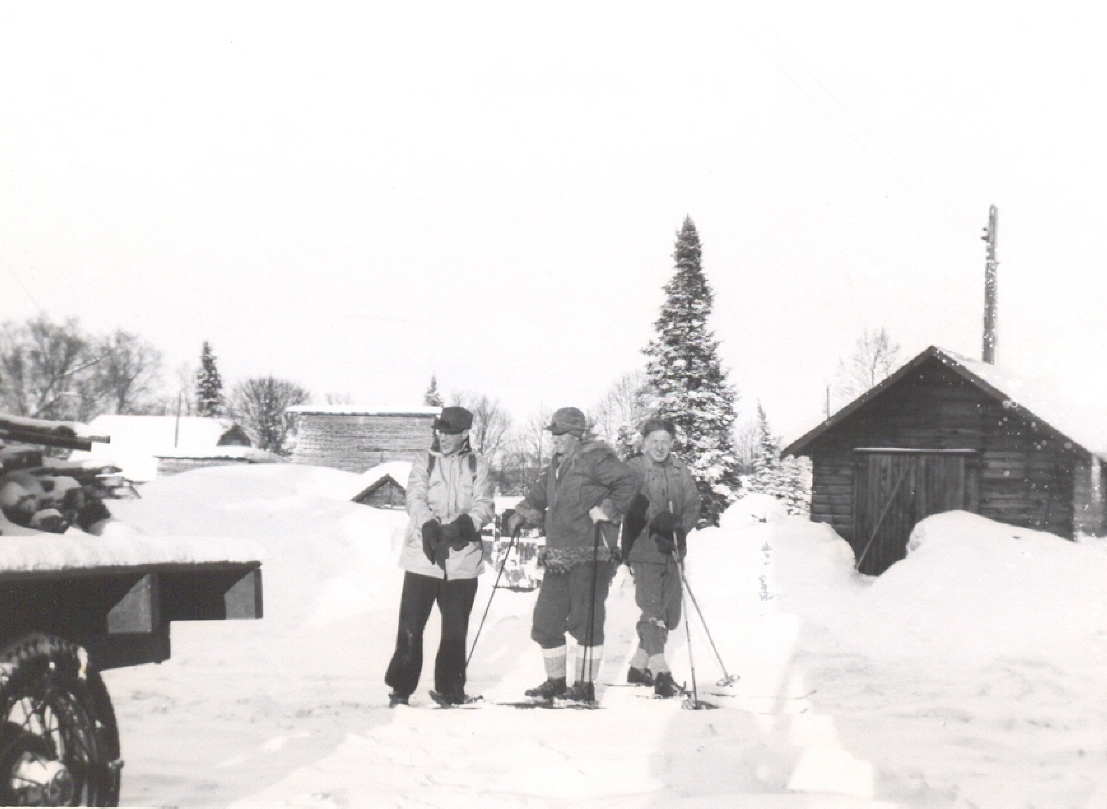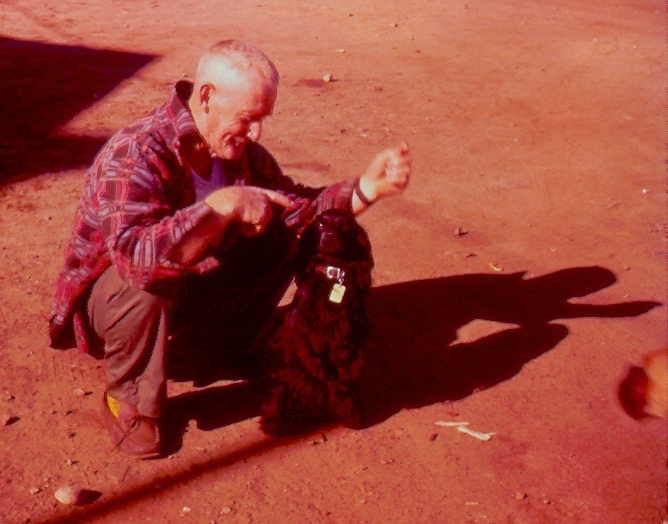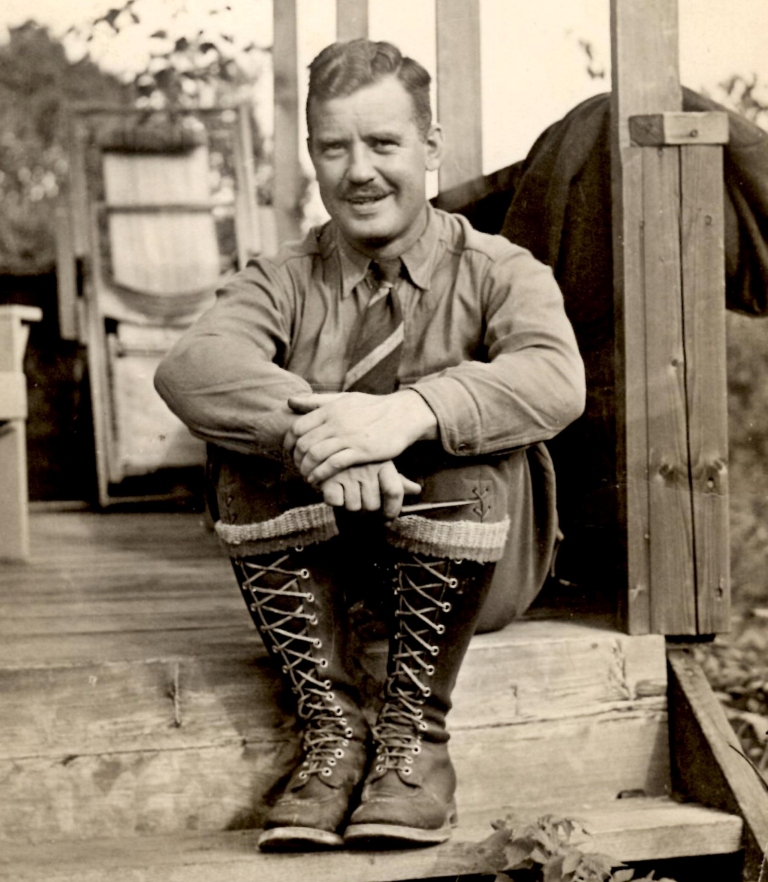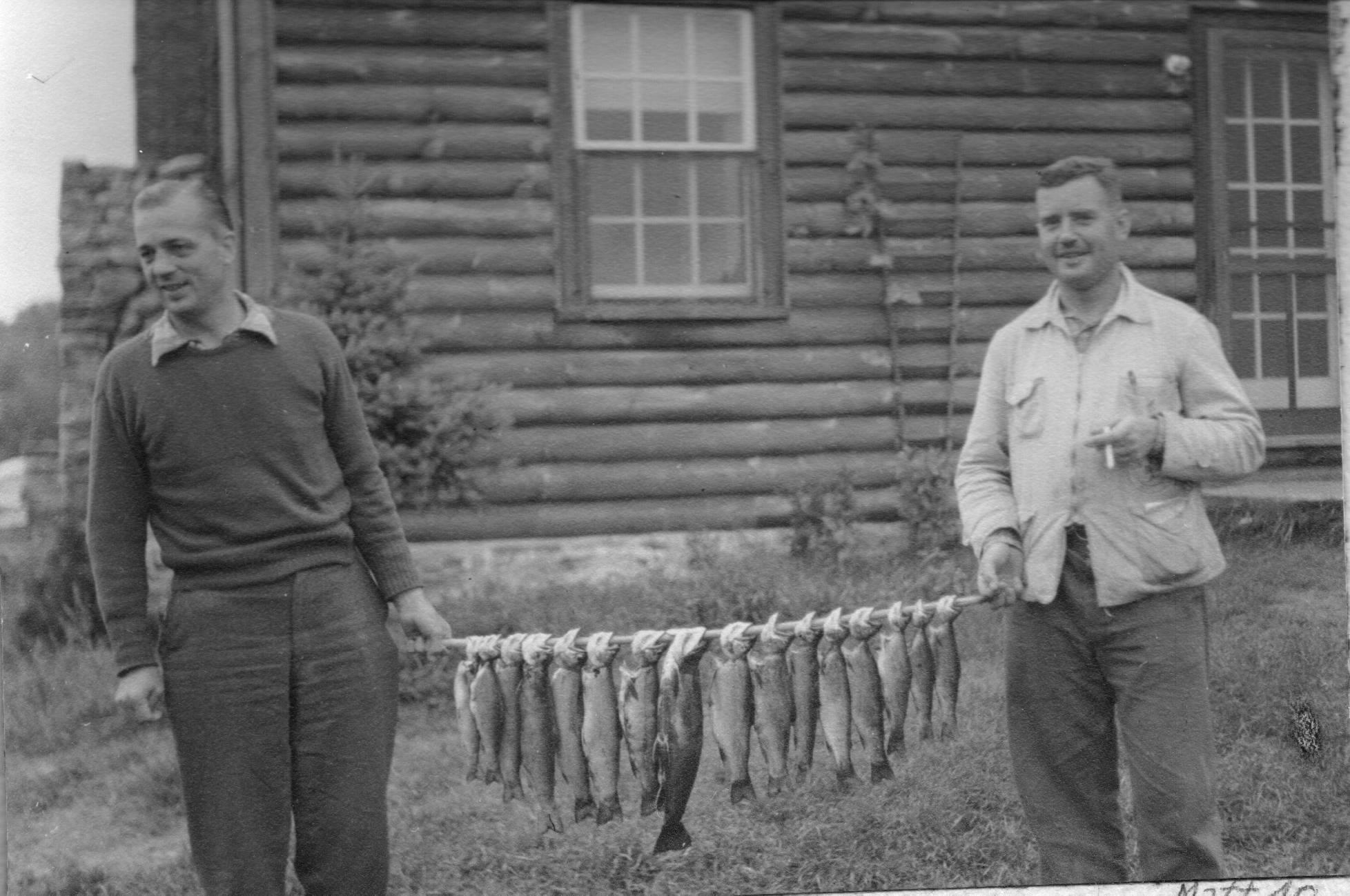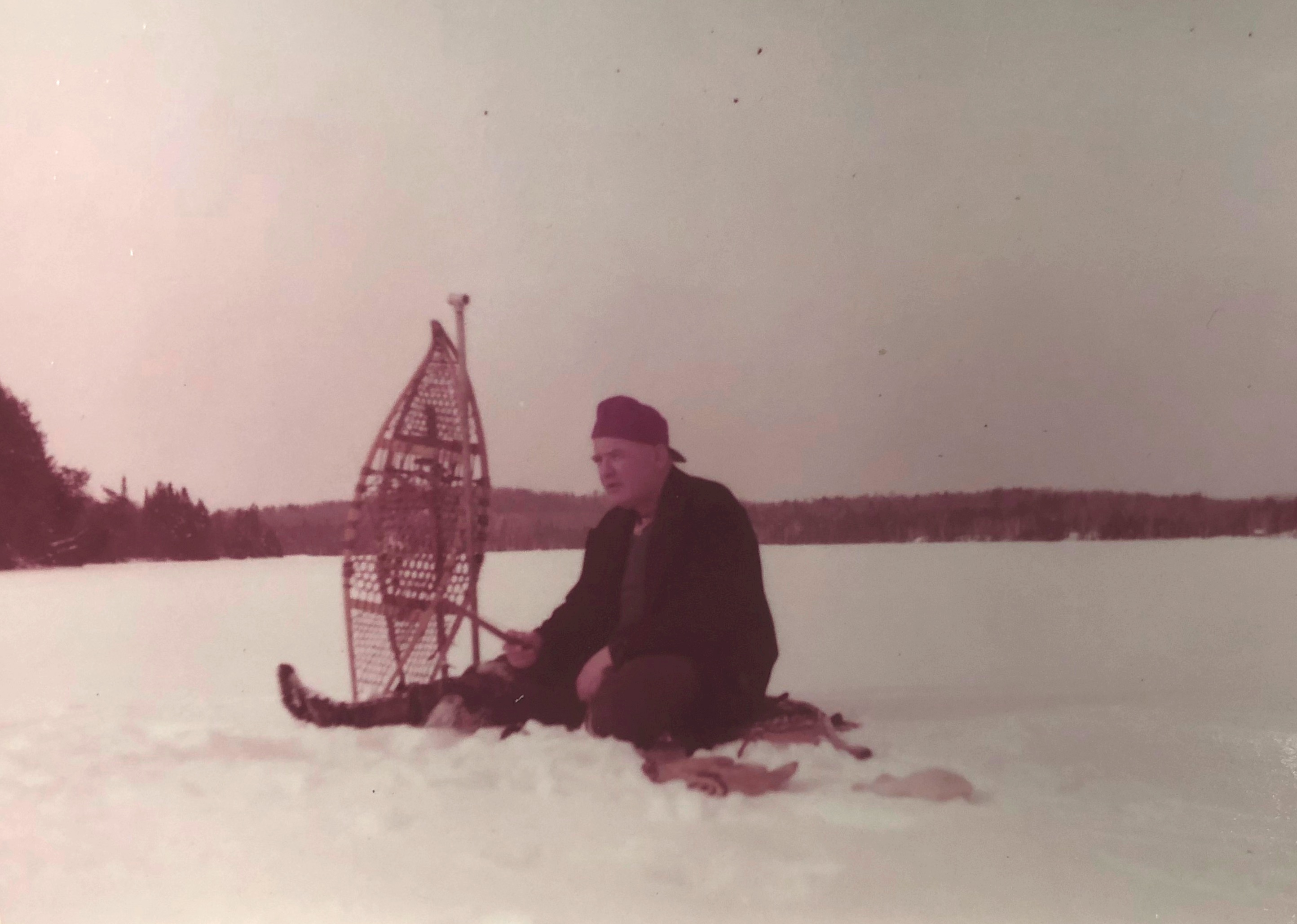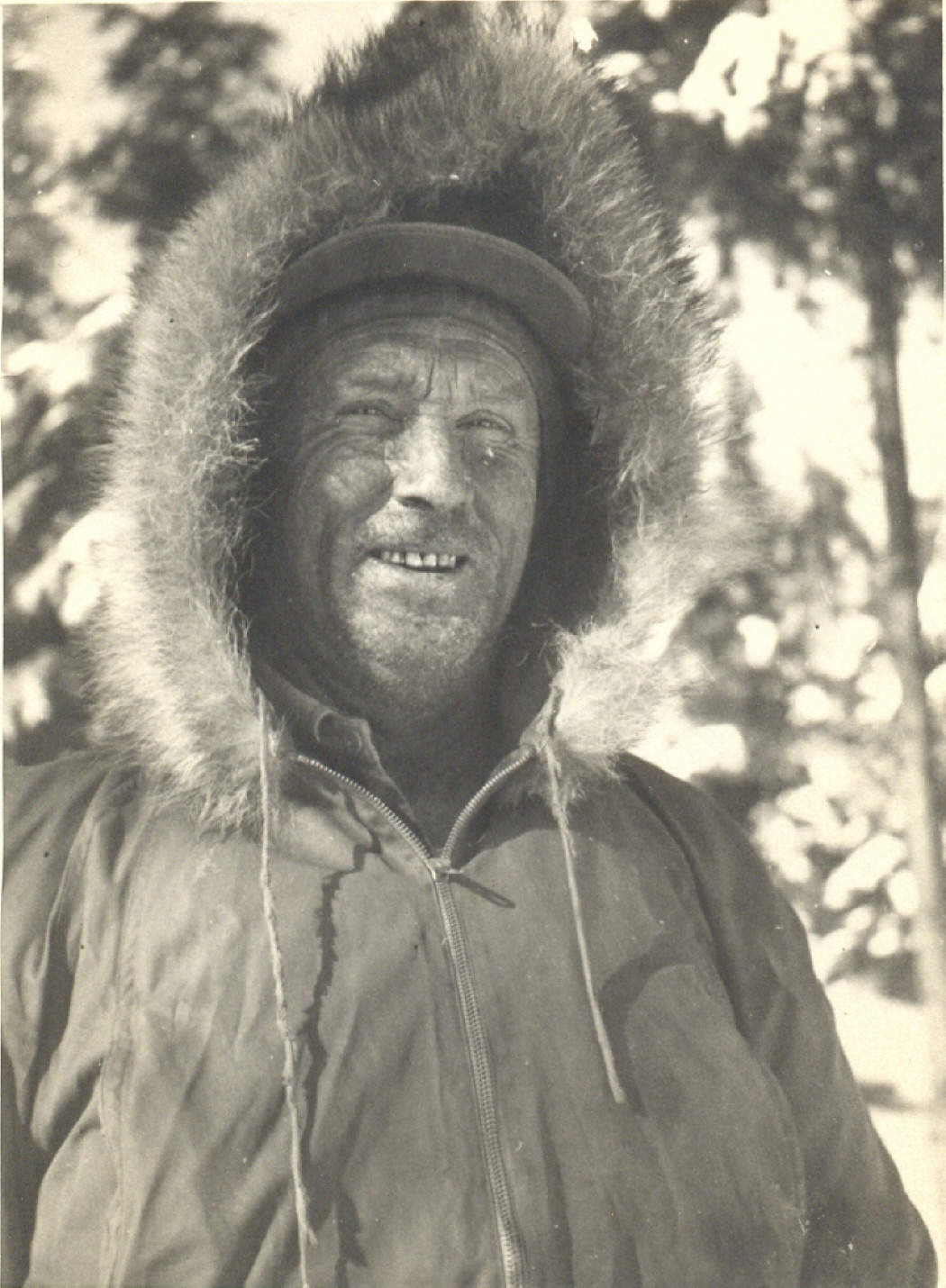 |
|
“Leatherwood Jim” – Jim Bennett was a hunting and fishing guide for many years. (Barbara Paterson Collection) |
Many men took seasonal work as hunting or fishing guides for the lodges and hunt camps, among them Limberlost Lodge, Camp Billie Bear, and the Loon Lake Hunt Club.
An early guide for the hunt camp that became the Loon Lake Club was Henry Hammell, who left for Saskatchewan in 1904 after the death of his wife Bertha Hart (sister of Mabel Brook). Other local men served as guides in subsequent years. Jesse Rhiness (1933-2015) of Huntsville had extensive trapping rights in the area, including the William Mansell lands from the 1950s into the 1980s. A popular feature of the Limberlost booth at the Toronto Sportsman’s Show in 1957 was Bob Burns, “trapper, woodsman, and a member of Limberlost’s staff for 37 years.”
Two good friends of Mabel and Edgar Brook, Geoff Isaac and trapper Jim Bennett, worked at both Billie Bear and Limberlost, as well as for others, in the 1930s, 1940s, and 1950s.Trapper for 33 Years
James Bennett, born in 1895 near Williamsport, held a lot (Lot 8, Concession 7) on the narrows of Hutcheson Bay, but his camp was on the south shore of the bay, at a more convenient landing on a lot held by James Bahen. Bennett moved a cabin from Algonquin Park to his Hutcheson Bay camp. “James Bennett, who lives on the shore of Rebecca Lake, is the second hunter to recently capture a large timber wolf,” reported the Huntsville Forester in February 1935. “Mr. Bennett had snares set in a wolf-frequented part of Bethune Township, and when he made his rounds last week he observed with satisfaction that he had bagged one of the coveted marauders.” Apparently the prize was on display at Camp Billie Bear.
Jim had brothers and a sister in Huntsville, but never married. In the 1940s into the 1950s, he was a guide at Billie Bear (and probably also Limberlost). “Jim was the guide the fishermen used when they stumbled into the bush on overnights,” wrote guest Gerry Livingston. “His cooking was outdoors – and famous – if not on the bestseller lists.”
When Mabel Brook, who owned Camp Billie Bear, and her husband Edgar Brook moved to Brook’s Mill after selling the Camp in 1945, many of their staff followed. One of the houses they built was for Jim Bennett, apparently so that “Brookie and Mabel could keep their eye on him.” Through the 1950s, Jim Bennett was a part-time caretaker for the Ontario Department of Public Works. He sold his trapping rights to William Barager in 1956, about a year before his death.
”Jim was a very colourful and much loved citizen, having spent so many years in and around this part of Muskoka,” wrote Mabel Brook in May 1957. “He was a veteran trapper and guide, and we are sure his name will be spoken a great many times this summer as visitors arrive, expecting to find Jim ready to guide them to the best fishing spots.”
Lost Lake Mink Farm
Jim Bennett had gone into partnership with Walter Brothers, who had retired from the railway but loved to hunt and trap, and created the Lost Lake Mink Farm, north of the East River. They purchased several adjoining lots, originally belonging to settlers Russell and Parker. The mink were raised (for fur sales) on the Russell lot in the 1930s or 1940s, high up on a hill, where there was an old square log cabin. Walter built a stone dam on the Parker property around 1937 and called the resulting large pond “Wally’s Lake” – whether his pond was “Lost Lake” or that name referred to a beaver pond on the Russell property is not certain. He built a log cabin there in about 1949.
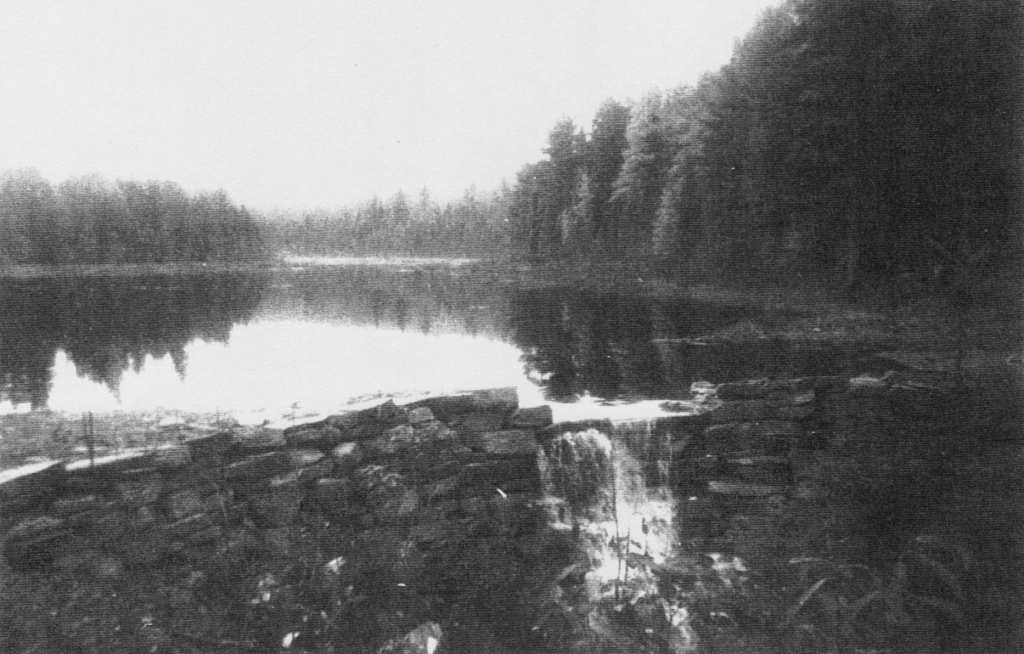 |
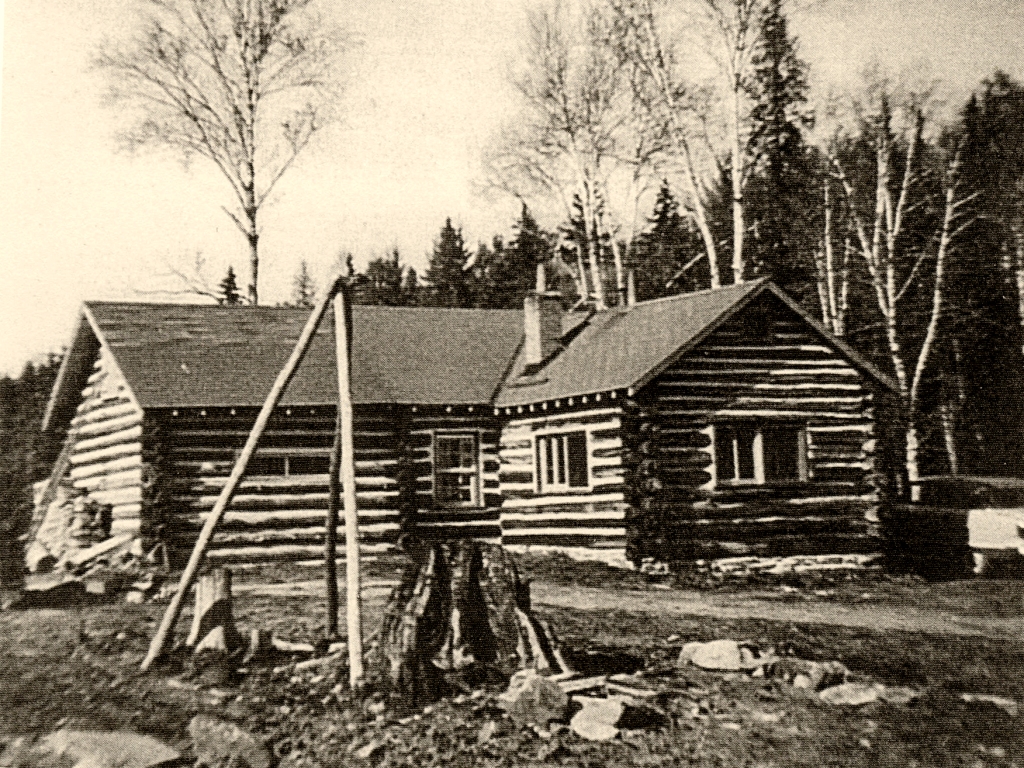 |
|
| Pond and stone dam built by Walter Brothers ca. 1937 on a creek on the Parker lot, north of the East River (Carol Van Vugt) | Walter Brothers’ cabin in 1960 (Carol Van Vugt) |
The Russell property was sold and became the Burtch Hunt Camp. In the 1960s, Walter Brothers sold his lots to field naturalists from Toronto – the Alpine Naturalist Club. Walter moved down to Heck’s Lake. In 1971, Sandy Thompson purchased the property from the field naturalists. His grandchildren own it now, and it is called Sandy’s Tree Farm.
A Raconteur and Showman
In the 1930s and 1940s, Geoff Isaac worked as a fishing guide, along with a range of other tasks, at Camp Billie Bear. He had come to Canada from England at an early age (according to Mabel Brook’s daughter Betty, he ran away to sea at 16 – if that was not just one of his stories). “His father had been an auctioneer, and I think that Geoff had inherited some of his showmanship from him, so he was quite a raconteur and quite a character,” Betty recalled.
Betty and Geoff were often called upon to organize entertainment for the young people among the guests. Geoff called the square dances held in the dining room (and later in the Court House): “He had a bunch of calls that you never heard before, I mean, they were just strictly his calls,” Betty said.
Geoff Isaac married an American guest at Billie Bear in 1940, but the marriage did not last. Mabel had given the couple a piece of the Billie Bear property at the bottom of the bay, and Geoff moved a cabin to the site, log by log, from the lot of an early settler on the Bobcaygeon line. However romantic the idea of a life in the Canadian bush may have sounded to the summer visitor, it appears she was not prepared for the reality. The cabin was isolated in winter, even with Camp Billie Bear next door. She returned home, and Geoff later sold the property to the Thompson family. Margaret Thompson (later Clifford) remembered him as “the man with the yellow canoe,” a feature of the waterfront into the 1970s.
Geoff may have later spent some time in Port Arthur, Ontario, but in the 1950s and 1960s he was working in Toronto, coming up to his campsite on Second Sandy at every opportunity and continuing to play a role in the community. At a benefit “Meet-your-neighbour” party hosted by the Atkins of Billie Bear in July 1954, Geoff acted as master of ceremonies, auctioneer, and caller for the square dance that followed.
“Mr. Geoffrey Isaacs and Mr. B. Corsette were up over the week-end to pack up their camping equipment and store it for the winter,” recounted Mabel in November 1955. “In these days when everyone seems to feel they need every convenience to make life in the woods happy, it’s nice to know there are a few souls who cling to the ‘simple’ way of living in the woods and still enjoy it.”
Sources:
Billie Bear Document Archive, letter to Barbara Paterson from Gerry Livingston, August 1982; Betty Schielke interview with Leo Serroul, June 1995.
Clifford, Paule, personal communication, May 2019.
Huntsville Forester, “Large Wolf Captured,” February 7, 1935, p. 4; “Brook’s Mill,” July 29, 1954, p. 2; “Brook’s Mill,” November 10, 1955, p. 7; “Limberlost Toronto Exhibit is Show-stopper,” April 4, 1957, p. 3; “Brook’s Mill,” May 30, 1957, p. 5; “Obituary: James Bennett,” May 30, 1957, p. 6; “Naturalists Locate in Muskoka, Purchase 200 Acres in Franklin [sic],” February 2, 1961, p. 1.
Kimmel, Wendy, personal communication, May 2019.
Township of Lake of Bays, Barbara Paterson Collection, “Cottage Histories by Road,” Brook’s Mill interviews; Box “5,” Loon Lake Hunt Club Archive.




